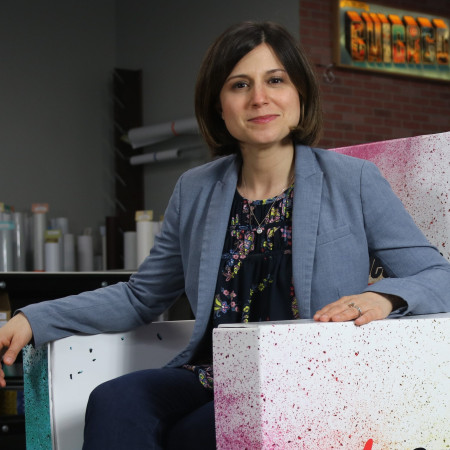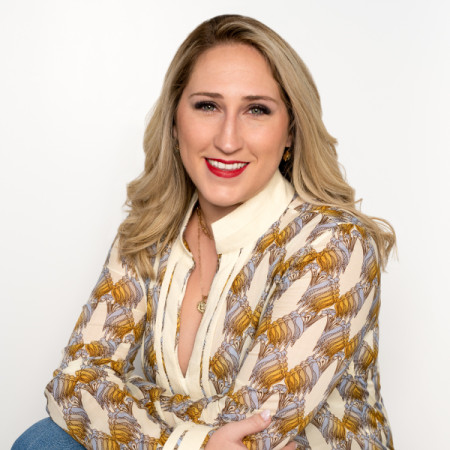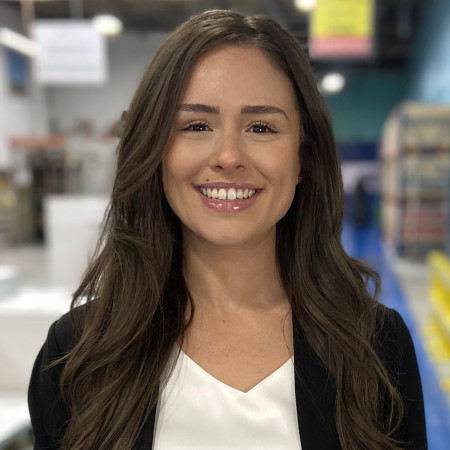Meet Trish Witkowski, an Innovator in the women in print community. Trish is president of Foldfactory.com and curator of the world’s most exciting collection of folded print and direct mail samples. She hosts the popular “Fold of the Week” vlog on YouTube—a long-running series with more than 640 episodes, a loyal following, and millions of views. She frequently speaks to designers, marketers, and graphic arts industry organizations to illustrate the power of print + digital marketing. Trish is also an instructor for LinkedIn Learning, a blogger, and the author of several books on print marketing and direct mail strategy. Thank you, Trish, for sharing your innovation and inspiration with the Women in Print Alliance community!
Do you know (or are you) a woman in the printing industry who is a Leader, an Educator, an Innovator, or a Rising Star that should be featured on our website and in our newsletter? If so, please contact us. We’d love to meet her!
How and when did you enter or become associated with the printing industry? What was your “Aha!” moment when you knew print was the right field for you?
I started as a designer who wanted to improve my value with print production training. I was a creative director for about 6 years before I went all-in on Foldfactory. I can’t say I know when my “a-ha!” moment was, but I felt a strong opportunity to completely own a niche, and if you look at brochure folding as a topic, all roads lead to me. Nobody can even touch the topic without crediting me (or Foldfactory) for the research, or the illustrations, or the videos. It’s taken a long time, and there’s always more to be done, but it’s satisfying after decades of work.
As Founder of Foldfactory, you’ve managed to take what could be viewed as a mundane design job and turn it into an innovative and creative process. Your signature “FOWs” – or “Fold of the Week” – videos made you one of the first industry “YouTube” sensations. How many FOWs have you presented? Where do you draw your inspiration to keep bringing us the latest folds? (And are you ever worried you’ll run out of folds?)
This week was episode 646, which is hard for me to believe, however it’s just been a part of my life for 14 years. It’s the thing I do on Thursday mornings. When I started, I had no idea where it would go, and how long I’d be doing this. It’s been a fun journey, but it hasn’t been without its challenges. I hit a slump right after episode 500. I worked toward that milestone for so long, and then episode 501 was like base camp Mt. Everest. I took a class for YouTube creators during COVID, which I credit for helping me to evolve and improve the show—the last two years or so are the episodes I’m most proud of. It was freeing to realize that I could do what I wanted with the content, which seems obvious, but these days, instead of one fold per week, I’m pulling multiple samples, and making observations and doing fun things that my audience is really enjoying, which is more fun for me, too. I’m also less reliant on new material coming in – I’ve been digging for gems in my Foldfactory archive of thousands of samples, and sometimes bringing back great folds from previous episodes of the show. I’ll never run out of show content with this approach.
We need to hear about the FOW t-shirts! Because not only are you a folding design innovator, you’re a marketing innovator, too. How did the idea for branded t-shirts originate and grow? Do you secretly have a favorite (or top 3) FOW t-shirt slogan?
The shirts were a silly idea that came out of my speaking events. Whenever I was about to share real-world samples in a presentation, I’d put up a slide with a folding slogan like “Stop, drop, and fold” or “Gimme the fold and nobody gets hurt” and people would just laugh out loud about it. So when I started the show, I felt like I needed a hook, and the changing shirt theme seemed like a fun idea. It put me on the map. In fact, sometimes industry people don’t even recognize me if I’m not “in uniform” but when the shirt’s on, they know exactly who I am. Here’s a blog post I wrote about the shirts that features all the shirt slogans. Over the years, fans have sent great ideas my way, and I always have a running list of ideas for new shirts. People always ask what I do with them, and I donate the t-shirts to a graphic arts program for screen printing students to practice on. My top three favorite shirt slogans at the moment (ask me again and I’ll pick different ones – I like so many of them):
This is my resting fold face (#549)
I fell into a burning ring of folds (episode #550)
Wherever you fold, I’ll be there (episode #631)
Another one of your innovations is Fold Club. Can you tell us a little about the club, and what led you to determine there was an appetite for an exclusive content-focused group in the print industry?
I think marketers have realized that having an owned audience is important – and Fold Club is how I find “my people” – it consists of 22,000 Template Builder users, FOW subscribers, and people who are generally interested in what I’m doing (I’m sure some are just there for the free dieline downloads, and that’s OK, too). Over on YouTube, I have 14,000 subscribers as well, and I spend most of my effort on those two platforms, plus LinkedIn. I have learned that being on all platforms exhausts me and doesn’t move the needle as much as I’d like it to, so I focus on where I see the most benefit and satisfaction for the effort. I would also say that as a content creator, it’s nice to have a tribe to write for. When I’m putting a blog together, I think about my subscribers, and I write to them because I know they know and appreciate my voice and I know what they are interested in. I can reach out and get their feedback. It’s motivating when the grind of content creation gets you down. And generally, what I write for them resonates with the broader industry as well.
You’ve expanded your FoldFactory role into various speaking engagements and industry collaborations. What advice would you give to someone in the print industry who’s seeking to leverage a unique design or technical skill/talent into one that can be shared with a mass audience?
Print is visual and tangible, so my advice for people who have a unique perspective or skill to share with a mass audience is to get into video. It makes you a better speaker, a better writer, a better communicator, and helps you develop your voice. You also become more attractive to sponsors and collaborators. You may be uncomfortable or nervous at first, but over time, you’ll get better at it. And if you get good at video, you can create a course, a series, etc. There’s a lot you can do with it. But spend some time on the mechanics – quality lighting, sound, set, etc. One caveat: don’t just make stuff. Every video should have a purpose, and a standard of quality. FOW has lasted 14 years with a cult-like following because every episode is important to me. Every episode must have a great shirt and an inspired idea to share. Over the years, I’ve had days where I just couldn’t ideate an episode – so I didn’t. I’d rather skip a week than shoot an episode I’m not proud of. The moment I stop caring is the moment my audience and influence starts to fade.
Throughout your association in and around the printing industry, how have you observed career opportunities evolving for women?
I may be a bit unique in my perspective on this, but I have never felt a lack of opportunity in the industry due to my gender. I truly expected roadblocks, but what I experienced was an industry that was welcoming and receptive to my work. I think anyone of any gender who approaches our industry with honest enthusiasm, interest, and curiosity will find many options for a career in the print industry. That said, If I really think about it, I made my own show, and published my research, and made myself impossible to ignore. So, maybe I went a bit rogue as well, and that’s how I got around potential obstacles. That’s a strategy, too, I guess!




